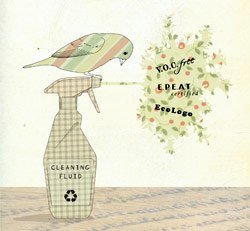Our Guide to the Best Green Products for Schools
Stock useful, effective, and environmentally responsible products at your school without going bust or getting duped.
Your content has been saved!
Go to My Saved Content.
The first step in outfitting your school with environmentally healthy products is to separate fact from fiction. In the crowded, often hyperbolic world of green consumption, it is important to know your stuff before buying your stuff. For instance, the common claim that green items -- from paint to paper to desk disinfectant -- are unaffordable luxuries is not true. Lean and green, say those who have done the math, can work hand in hand. But which affordable products can be trusted to deliver on the green promise?
"Green doesn't have to cost more and, in some cases, it can cost less," says Rachel Gutter, director of the schools sector at the U.S. Green Building Council (USGBC). "But there's no one-stop shop. So many people are demanding green that there's a lot of greenwashing going on out there."
Greenwashing -- making false claims about the environmental virtues of a product or service -- is exacerbated by confusion about the meaning and interpretation of labels in the green-products industry. Even words such as green and sustainable aren't standardized. One industry insider describes the issue as "the Tower of Babel of the green world."
This much is clear: Even though a rising demand for safe, low-impact products has driven competition up and prices down, school administrators responsible for purchasing still need to look beyond the up-front sticker price of green products to consider a product's durability and lifetime expectancy, how much energy it consumes over the long haul, and how much it costs to operate and maintain.
"You get what you pay for," says architect Anja S. Caldwell, of ecoipso, a Maryland-based consulting firm specializing in sustainable design and in greening the operation and construction of schools and hotels. "The cheapest option is usually the most costly to maintain, so consider long-term costs."
Once you know what you want and what it should cost, the question is, "Where to buy?" No road map exists to navigate this territory, which can be rife with false claims and vague guarantees. Marilyn Black, founder of the Greenguard Environmental Institute (GEI) -- a nonprofit certifier of products with low emissions of volatile organic compounds (VOCs) -- knows the pitfalls all too well: "The most common mistake we see is the purchasing of products made solely on manufacturers' claims. The biggest mistake is not using third-party verification."
Her company's Greenguard Standard for Children & Schools certification program identifies how various products, furnishings, and building materials affect indoor air quality. Other reputable third-party certifiers helping to separate the wheat from the chaff include Energy Star, Green Seal, and EcoLogo. (Additional reputable certifiers and standard bearers are highlighted in the products list below.)
Our guide to green products, links to which are located on the top right of this page, aims to help with a selection process that can cause anyone's eyes to glaze over. We offer practical tips and product selections based on recommendations from high-quality sources: architects who specialize in sustainability and the USGBC's Leadership in Energy and Environmental Design (LEED) standards; experts in cleaning, building, and indoor air quality; and decision makers involved with making green a reality at their schools.
Additionally, we cite third-party certifiers whose own extensive lists of certified products can be found on their Web sites. And we recommend you check out the Green Schools Buying Guide. This free online resource from the Green Schools Initiative offers extensive information and valuable pointers on green products and strategies.
Evantheia Schibsted is a freelance writer whose work appears regularly in Edutopia.
Check out these articles to learn more about green products:
And see our full inventory of green-school resources.